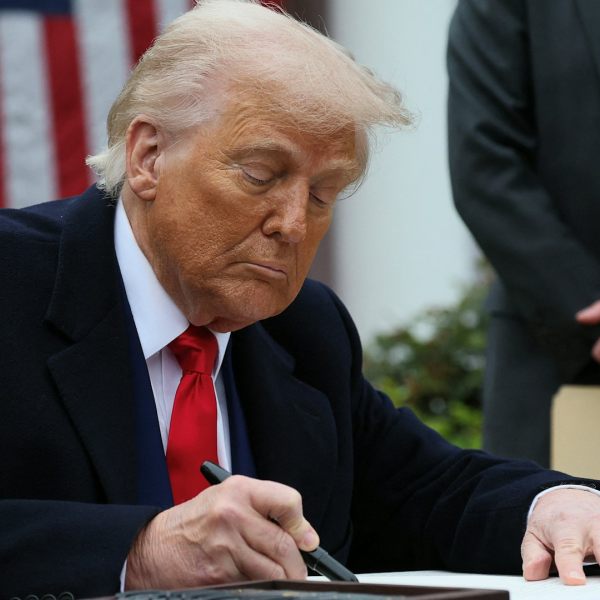25 basis points not enough? The market bets that the Federal Reserve will continue to cut rates—will Powell signal a shift this time?
Facing internal disagreements and immense political pressure, how will Federal Reserve Chairman Powell signal the future policy path? This may be the key factor determining the direction of the market.
The market generally expects that the Federal Reserve will continue to cut interest rates by 25 basis points this week, aiming to prevent further slowdown in the labor market, and this may not be the end of a series of rate cuts.
The continued rise in initial jobless claims indicates that demand in the labor market continues to cool. Although the government shutdown has led to delays in the release of most official economic data, including the unemployment rate (the last estimate for August was 4.3%).
Weaker-than-expected inflation data, including last week's report showing the Consumer Price Index (CPI) rose 3% year-on-year, has temporarily set aside concerns about tariff-driven price pressures. Perhaps more importantly, after last month's 25 basis point rate cut, the consensus post-meeting statement from the Federal Reserve included language about "additional adjustments" to policy rates.
Federal Reserve Vice Chair for Supervision Bowman specifically pointed out that this wording suggests further rate cuts in the future, and analysts expect the Federal Reserve will not signal a possible pause in rate cuts by changing this wording.
Michael Feroli, Chief U.S. Economist at JPMorgan, wrote: "Although a considerable portion of the committee may wish to signal that December's easing should not be taken for granted, we believe that choosing such alternative wording may be too hawkish for the leadership."
Of course, Federal Reserve Chair Powell will not suggest at Thursday's post-meeting press conference that another rate cut in December is a done deal. There are too many variables, and global trade negotiations are still evolving, which could reshape expectations for prices and broader economic growth.
Moreover, if the government shutdown ends and data releases resume, Federal Reserve policymakers will have access to three months of employment data between now and the December meeting, which could reshape their views on the state of the labor market.
Economists at Deutsche Bank stated: "Powell may keep all options open and will not make any pre-commitments to specific actions before the end of the year."
Currently, financial markets are heavily betting that the Federal Reserve will further cut rates in December and January next year.
The Trump administration has been outspoken about its desire to lower interest rates, putting Powell under tremendous political pressure as he deals with deep divisions within the Federal Reserve's decision-making body.
Since the decision in September, several Federal Reserve policymakers have called for caution in easing policy, citing concerns about inflation far above the Fed's 2% target in recent years.
However, more officials have stated that they believe further rate cuts are needed to manage the risk of further deterioration in the job market.
Newly appointed Federal Reserve Governor Milan may continue to cast a dissenting vote this week, as he did last month when he supported a 50 basis point rate cut. Milan plans to return to his position as a White House economic adviser after his term at the Federal Reserve ends in January.
In addition to the rate decision itself, the Federal Reserve may also signal this week that it will soon stop shrinking its balance sheet, possibly ending its so-called quantitative tightening as early as this month.
Analysts say that this week's meeting may also see heated debate on how the Federal Reserve communicates its rate path guidance, as the institution seeks to improve its communication methods.
Disclaimer: The content of this article solely reflects the author's opinion and does not represent the platform in any capacity. This article is not intended to serve as a reference for making investment decisions.
You may also like
From Spotlight to the Sidelines: The Bubble Burst of 8 Star VC-Backed Projects
Is it because the model is unsustainable, the ecosystem has yet to launch, the competitors are too strong, or is there simply insufficient market demand?

The Next "Black Swan": "Tariff Refund Mega Deal", Wall Street and Individual Investors Are Placing Bets
Individual investors are participating in this game through emerging prediction markets such as Kalshi and Polymarket.

Since the U.S. legislation in July, stablecoin usage has surged by 70%!
After the "Genius Act" was passed in the United States, stablecoin payment volumes surged, with August transactions exceeding 10 billion USD. Nearly two-thirds of this amount came from inter-company transfers, making it the main driving force.

BlackRock Shifts $500 Million Funds to Polygon Network
In Brief BlackRock transfers $500 million to Polygon, enhancing blockchain integration in finance. The move shows increased trust in blockchain-based financial structures. It indicates a trend towards decentralization and long-term structural change in finance.

